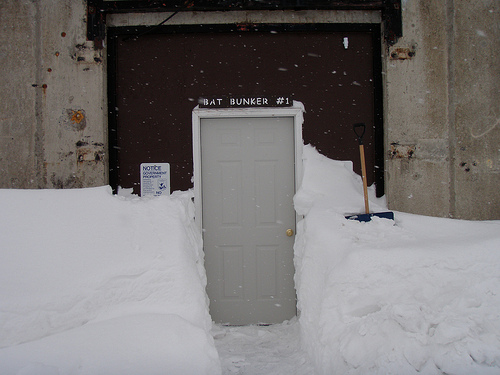 Thirty bats from New York and Vermont, some of which were visibly infected with white nose syndrome (WNS), were moved to a specially-prepared military bunker in Maine to spend the winter. Nine bats survived, a higher percentage than would have been expected if they had been left in the wild. Those bats were returned to the locations where they were found.
Thirty bats from New York and Vermont, some of which were visibly infected with white nose syndrome (WNS), were moved to a specially-prepared military bunker in Maine to spend the winter. Nine bats survived, a higher percentage than would have been expected if they had been left in the wild. Those bats were returned to the locations where they were found.
“We learned a lot from this experiment,” said Vermont Fish & Wildlife bat project leader Scott Darling in a department press release. “These bats were visibly infected before being placed in the bunker, so we wouldn’t have expected many of them to survive in their natural cave environment.”
Read the Vermont Fish and Wildlife press release here.
Read the US Fish and Wildlife Service, Northeast’s blog here — with many wonderful photos. (Scroll down a bit to get to the main story about the bunker and WNS.)
Read a guest post on the USFWS white nose syndrome blog from the assistant manager at the National Wildlife Refuge where the bats wintered here. (With the same photos, and a link to a Flicker page.)Read an article from the Rutland (Vermont) Herald here. (But be warned that its articles go behind a paywall in a week, sometimes sooner.)
And in related news, here’s a report from the Barre/Montpelier Times-Argus and Rutland Herald, about further WNS research in Vermont this winter. (It may also disappear behind a paywall.)
Photo: The bunker door at the Aroostok National Wildlife Refuge in late March. by Steve Agius, courtesy USFWS

Great post. Thanks for the link!